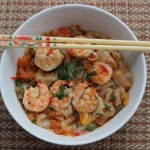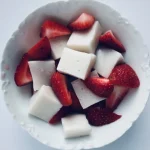Understanding Fish Food Recipes Aquarium Fish Food vs Seafood Recipes Why Make Your Own Fish Food
When talking about fish food recipes, it’s important to know there’s a big difference between what you feed your aquarium fish and the seafood dishes you cook for yourself. Aquarium fish food is specially made to meet the dietary needs of pet fish, focusing on balanced nutrients to keep them healthy and active. On the other hand, seafood recipes are designed for human taste and nutrition, highlighting flavors, textures, and health benefits like omega-3s.
Making your own fish food, especially for aquarium pets, has some solid advantages. It lets you control the ingredients, avoid fillers or preservatives, and tailor the diet to your fish’s specific needs. Plus, homemade fish food often means fresher ingredients and better nutrition compared to store-bought options. Whether you’re feeding your tank or preparing meals for your family, knowing the difference helps you make smarter choices in the kitchen or at the aquarium.
Homemade Fish Food Recipes for Aquarium Pets
Making your own fish food at home is a smart way to ensure your aquarium pets get a healthy, balanced diet. You control the ingredients, avoid fillers, and can customize meals to suit different species. Plus, it’s often fresher and more nutritious than store-bought options.
Ingredients for Healthy Fish Food
When preparing DIY fish food, focus on ingredients rich in protein, vitamins, and essential fats like omega-3s. Common healthy ingredients include:
- Shrimp or fish fillets (fresh or frozen, finely chopped)
- Gemüse like peas, spinach, or zucchini (blanched and mashed)
- Gelatin or agar-agar to bind ingredients
- Vitamins and minerals supplements (optional but helpful)
- Garlic (small amounts for immune boost)
- Spirulina powder for added nutrition and color
Step-by-Step DIY Fish Food Recipe
Here’s a simple recipe to get started:
- Prepare Ingredients: Finely chop or blend shrimp or fish fillets and vegetables.
- Mix: Combine all ingredients in a bowl. Add gelatin dissolved in water to bind.
- Set: Pour mixture into molds or trays.
- Chill: Refrigerate until firm.
- Portion: Cut into small pieces suitable for your fish.
- Store: Keep homemade fish food in the fridge for up to 3 days or freeze in portions.
Safety and Quality Tips
- Always use fresh or properly frozen seafood to avoid contamination.
- Avoid additives or preservatives found in commercial fish food.
- Prepare in small batches to keep food fresh.
- Wash your hands and utensils thoroughly before preparation.
- Introduce new homemade food gradually to your fish to monitor how they react.
Homemade fish food gives you peace of mind and helps keep your aquarium community healthy and thriving.
Delicious Seafood Recipes for Human Consumption Quick and Healthy Fish Recipes for Busy Lifestyles Nutritional Benefits of Fish Cooking Tips for Perfect Fish Dishes
Seafood is a go-to for tasty, healthy meals that come together quickly—perfect for busy schedules. Whether you’re grilling, baking, or pan-searing, fish offers rich flavor and loads of nutrition, especially omega-3 fatty acids, which support heart health and brain function. Some quick and healthy fish recipes I recommend include baked salmon with lemon and herbs, grilled tilapia tacos, or simple sautéed cod with garlic and spinach.
Fish is packed with protein and essential nutrients yet tends to be low in calories, making it a smart choice for anyone watching their diet. Plus, seafood often cooks faster than other proteins, so you’re not stuck in the kitchen for hours.
To get the best results when cooking fish:
- Keep it simple: Use fresh ingredients like lemon, herbs, and olive oil to enhance natural flavor without overpowering the fish.
- Cook evenly: Use a moderate heat and avoid overcooking. Fish is done when it flakes easily with a fork.
- Mind the texture: For delicate fish, quick searing or steaming works well; heartier fish can handle baking or grilling.
- Don’t forget seasoning: Salt, pepper, and spices bring out the best in your seafood dish.
With these tips, you can enjoy delicious, healthy fish meals anytime, even if your schedule is tight.
Sustainable and Budget Friendly Tips for Fish Food Recipes
When making fish food recipes, keeping things sustainable and budget-friendly is key. Here’s how I approach it:
Smart Ingredient Sourcing
- Buy local and seasonal—Choosing ingredients from local markets or farms helps reduce the carbon footprint and often costs less.
- Use whole fish or parts—For homemade aquarium fish food or seafood recipes, consider less popular cuts like fish heads or trimmings. They’re nutritious and cheaper.
- Freeze in bulk—Buying fish in bulk and freezing it in portions saves money and reduces frequent trips to the store.
Cutting Down on Waste
- Repurpose leftovers—Use leftover veggies, shrimp shells, or fish scraps to boost your DIY fish food recipe or make homemade fish broths.
- Compost what you can’t use—Keep your kitchen waste out of landfills by composting organic materials.
- Plan meals and feeding—Feed your aquarium fish the right amount to avoid excess food waste and plan your seafood meals to use ingredients fully.
These simple steps help keep homemade fish food recipes and healthy fish dishes sustainable, affordable, and kind to both your wallet and the environment.
Häufig gestellte Fragen
What is the best homemade fish food for aquarium pets?
A balanced homemade fish food includes protein sources like shrimp, fish flakes, and veggies like spinach or peas. This supports a healthy aquarium fish diet.
Can I use human seafood recipes to feed my pet fish?
No, seafood recipes for humans are usually seasoned and cooked, which can harm pet fish. Always stick to recipes designed for fish food.
How often should I feed my aquarium fish homemade food?
Feed small amounts 1-2 times a day depending on your fish type. Overfeeding can cause water quality issues.
Are homemade fish food recipes nutritious?
Yes, when you include ingredients rich in omega-3, vitamins, and minerals, homemade fish food can be very healthy.
What ingredients should I avoid in DIY fish food?
Avoid salty, spicy, or processed human foods. Stay away from ingredients high in preservatives or fats that aren’t safe for fish.
How do I store homemade fish food?
Refrigerate or freeze portions in airtight containers. Use within a week if refrigerated, or freeze for longer storage.
Are homemade fish food recipes cost-effective?
Yes, making fish food at home can save money and reduce waste compared to buying commercial products.
Is fish food for pets different from food for human consumption?
Absolutely. Fish food for pets focuses on their specific dietary needs with no added salt or spices, unlike human seafood recipes.
Feel free to ask any more questions about homemade fish food or cooking healthy fish dishes!









